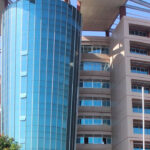
. Operator spends N11.1b to relocate infrastructure
For the first four months of 2024, Lagos, Rivers, Abuja and Enugu have emerged as the topmost destinations where telecoms operators recorded the highest forms of fibre cuts.
Other states in that line include Kaduna, Anambra, Delta, Ogun, Abia and Akwa Ibom respectively.
This was disclosed in the digital economy report presented by Groupe Spécial Mobile Association (GSMA) to the Federal Government through the Ministry of Innovation and Digital Economy.
The report, which focused on fibre cuts from 2021 to April 2024, showed that Lagos, Kaduna, Ogun and Imo states witnessed more cuts in 2022. In 2023, Lagos, Rivers, Kaduna, Oyo and Abuja respectively saw more fibre cuts.
GSMA, which banked on information from the Association of Licensed Telecoms Operators of Nigeria (ALTON), said service providers have responded to the problem of excessive cable cuts in several ways.
It disclosed that at the design and planning stage, they needed to anticipate the likelihood of extensive cable damage by building additional protection to cable infrastructure, saying they build additional redundancy into networks, ensuring that there are multiple alternative routes available for traffic in the event of a break.
GSMA, the global advocacy body for telecoms operators informed that service operators spend more on cable repairs and maintenance from damages.
“All of these measures have high costs associated with them. The result is that fibre networks in Nigeria cost more to build and maintain than they should. These costs are very significant. MTN, for example, was required to relocate 1,069 km of fibre cables in FY22 and a further 1,433 km in FY23. The budgets for this activity were N4.4 billion and N6.7 billion, respectively,” the body noted.
According to the report, the impact of this damage to fibre-optic cables is far-reaching, stating that money spent on repairing cable breaks could have been spent on further extending the networks into currently underserved areas.
Alternatively, GSMA said the money spent could have been redeployed to new mobile sites, also in rural areas. “For example, if these funds had been spent on rollout rather than repairs, MTN could have built an additional 870km of new fibre. The true cost of the failure to protect fibre network infrastructure is therefore in the missed opportunity to provide rural Nigeria with broadband coverage,” it stressed.
One approach, according to GSMA, to reducing the impact of excessive fibre cuts would be to provide fibre networks, and indeed all telecoms network infrastructure (including towers, poles, generators), with legal protection.
It noted that legislation that would designate telecoms networks as Critical National Infrastructure (CNI) has been under consideration in Nigeria but has not yet been approved.
GSMA explained that such legislation would go some way towards reducing damage to telecoms network infrastructure caused by construction and sabotage.
The telecoms body said given the role that these networks play in the lives of hundreds of millions of Nigerians and the country’s economic development prospects, it would be reasonable to afford them some legal protection from excessive damage.
Already, a Special Purpose Vehicle (SPV) that will deliver an additional 90,000km of fibre optic cable to complement existing infrastructure for universal access to the Internet across Nigeria will be unveiled by the Federal Government.
Minister of Communications, Innovation, and Digital Economy, Dr. Bosun Tijani, announced this in Abuja on Tuesday.
Tijani said the Ministry has, over the last few months, begun the groundwork to set up the SPV, which will be modeled in governance and operations like some of the best Public-Private Partnership setups in Nigeria, such as NIBSS and NLNG.
According to him, working with partners and stakeholders from the government and private sector, the SPV will build the additional fibre optic coverage required to take Nigeria’s connectivity backbone to a minimum of 125,000km, from the current coverage of about 35,000km.
The project is expected to help the country increase Internet penetration in Nigeria to over 70 per cent and reduce the cost of access to the Internet by over 60 per cent.
Through the project, Tijani said Nigeria would achieve the inclusion of at least 50 per cent of the 33 million Nigerians currently excluded from access to the Internet. It is also expected to deliver up to 1.5 per cent of gross domestic product (GDP) growth per capita, raising GDP from $472.6 billion (2022) to $502 billion over the next four years.












